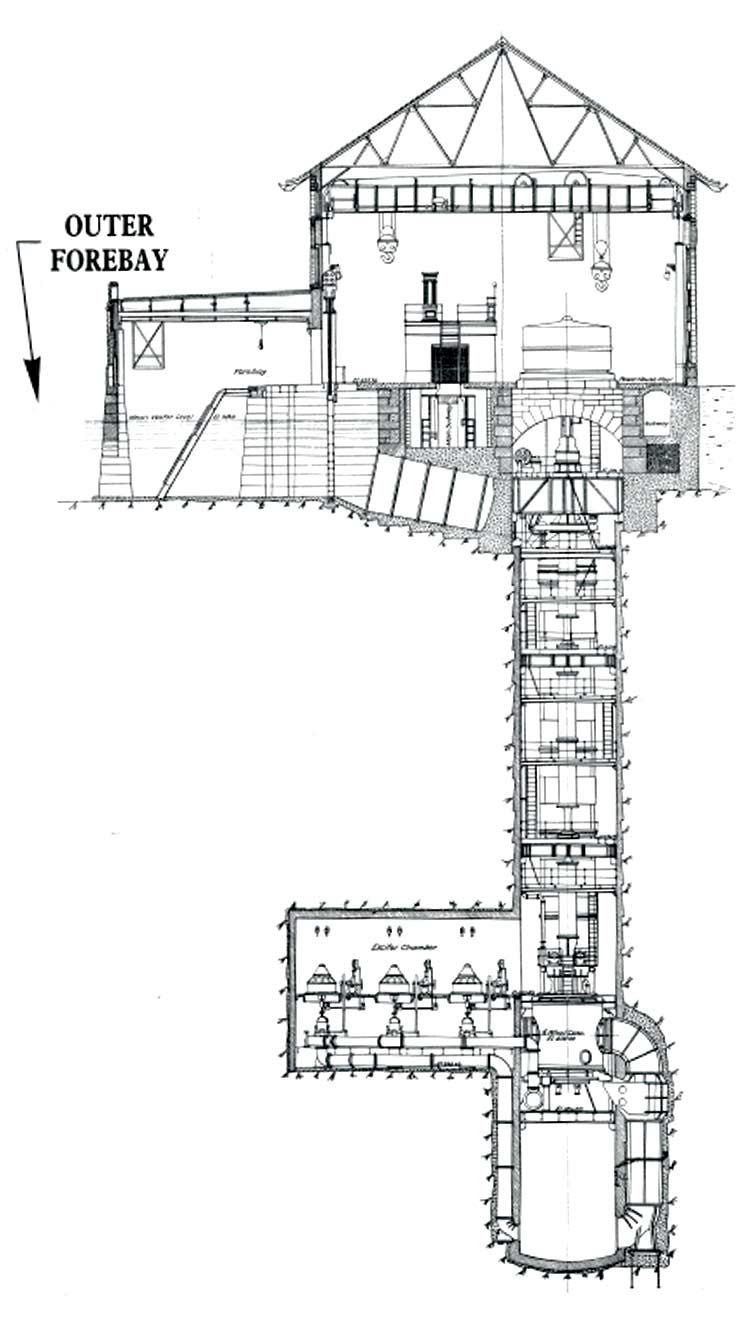Story of Water
How water flowed through the plant
A low, arm-shaped dam reached out into the Niagara River to direct water towards the plant and into the outer forebay. Once in the outer forebay, the water flowed under the arches on the front face of the plant and into the inner forebay. The water was then pulled from the inner forebay and into the penstocks.
The amount of water that flowed through the penstocks was controlled with a headgate. When the headgate was raised, or fully open, water flowed freely through the penstocks. When it was lowered, or slightly closed, the water flow was restricted.
The water collected kinetic energy as it proceeded down the penstocks. Once it reached the bottom of the penstocks, a spiral casing directed the water across the turbines. The water then exited via the center of the turbine and was released into the tailrace where it was directed back to the river.
As the water passed through the turbines, it pushed the blades creating a rotation. The spinning turbines were connected to shafts that travelled all the way back up to the main floor, where they were attached to a rotor. As the turbines and shafts spun, the rotors spun within the generators.
In this power station, electricity was produced in alternating electric current generators by electromagnetic induction. During operation, the generator’s armature coils remained stationary as a rotating magnetic flux produced by the rotor induce electricity in them.
The rotor, a cylindrical piece surrounded by magnets, spun inside of the stator that held a fixed set of conductive copper wiring. As the magnets passed over the wiring, electrons were pushed back and forth creating electricity.

